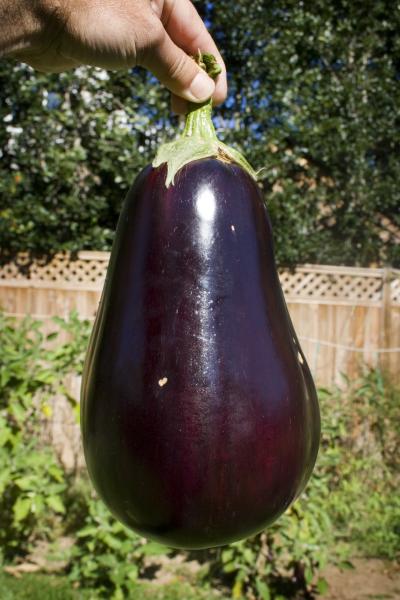It’s been a while since I wrote about foreign bodies in the body; but, given a recent published case report describes a 20-cm eggplant transanally positioned and stuck in the rectum of a patient, there seemed to be no better time than the present. As my series Inanimate Objects in Orifices worked its way down from the eyes, ears, nose and throat to vagina, urethra and penis, I thought it prudent to discuss the health challenges caused by those anally inserted - inanimate or otherwise.
Whether it be esophageal tears from hot pepper challenges, toxic ingestion from Tide pod challenges and snorting condoms or the consequence of objects in need of retrieval via the anus, the healthcare burden of these choices can evolve to a matter of life or death.
The case of the eggplant lodged in the rectum
A team of doctors from Japan’s Division of Gastroenterology at the Hyogo College of Medicine report
“A 66-year-old man visited our hospital because of an eggplant which had been inserted into his rectum by his friend and could not be removed.”
They successfully retrieved the large foreign body through endoscopy with the help of a polypectomy snare after confirming the object by imaging studies. This mode of removal was attempted given the patient had abdominal pain, but showed no obvious signs of inflammation (e.g. peritonitis) or infection inside the abdominal cavity (e.g. lab studies normal, vital signs stable). The procedure was performed without complications or anesthesia, and the patient’s discomfort subsided as a result.
What’s the urgency?
Like all aspects of the body, severity of issues come down to real estate. Location, location, location. The danger of a large foreign object extending to the sigmoid colon is its risk of obstruction and rupture. It is quite common, out of embarrassment or shame, for a patient to delay seeking medical treatment for such issues. In the process, swelling and inflammation take hold putting the patient at grave risk of perforating the gastrointestinal tract. Once this happens, the contents within the colon, for example, riddled with stool and bacteria enter the sterile environment of the abdominal cavity. Peritonitis and septic shock can ensue. Open, major abdominal surgery might be necessary to avoid such outcomes which in the process can turn an otherwise healthy person into one requiring future care. This is why in the eligible patient, less is more and manual retrieval (e.g. using fingers or hand), when possible, is the ideal scenario. Endoscopy is the next best option to avoid abdominal surgery. Sometimes nature by taking its course makes that choice, not the medical team or patient.
Is an eggplant better than a light bulb or glass bottle?
If one is going to have a foreign object stuck in one’s rectum, then something without sharp edges would be preferred. The litany of predecessors is long, among them: mandarin, carrot, green apple, cigar case, glass bottle, light bulb, giant vibrators, sex toys in full or part. The problems occur from the chosen object itself and the difficulties extracting it can create. Though more often due to sexual activity gone awry, there are situations where causes are due to medical efforts like broken pieces from enemas. Either way, when a pointed edge is in the mix, this can cause damage to the mucosal lining and predispose to perforations. When the object is left for a while, local swelling occurs and the anal sphincter clamps down adding to the challenge. Pressure changes, circulation disturbances and the materials of the object can compromise the situation further with the latter eroding into the surrounding structures or breaking off in pieces.
Is all well that ends well?
In the case of the eggplant, it seems so.
But, given the Centers for Disease Control and Prevention says potentially preventable deaths by unintentional injury surged 23% from 2010 to 2014, the human component might need some addressing. Though predominantly from poisonings and falls, such injuries also incur tremendous financial burdens - with falls responsible for $31 billion in direct medical costs. And, that only addresses those who did not survive, many more seek emergency or outpatient services. This eggplant subcategory of what I call intentional, unintentional injury contributes meaningful distress to the person impacted and routinely requires substantial system resources to remedy. Chronic issues can arise from these isolated acts. Raising awareness about the risks associated with placing objects in bodily orifices might just be the best avenue for prevention.




